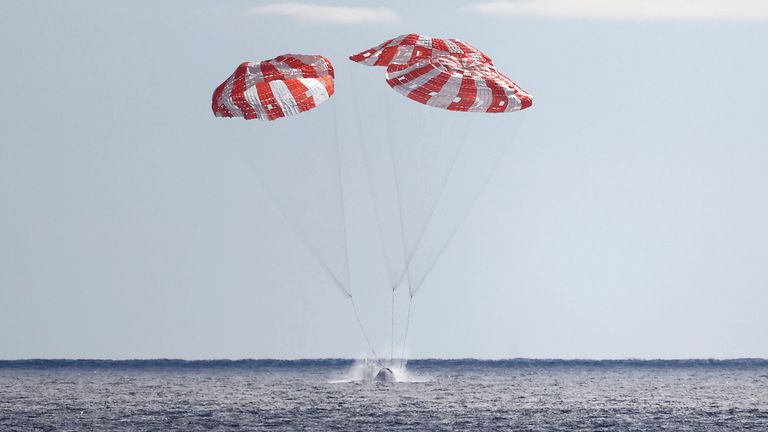Artemis I Lands Back on Earth
‘This was a Challenging Mission’ says Mission Manager
December 18, 2022
NASA’s incredible multi-billion spacecraft successfully returned and finished its mission down in the Pacific Ocean, west of Baja, California on December 11 at 9:40 A.M. PST. It launched at the Kennedy Space Center in Florida at 1:47 A.M. ET on November 16th.
Although it was an unmanned mission, it has now been the most recent moon mission planned by NASA since Apollo 17. It also coincided with the 50th anniversary of the same landing and mission. Nobody has been on the moon since then. Artemis traveled 1.4 million miles circling the moon, and returning after 25 days. Surprisingly, no other human-made spacecraft has ever achieved a feat like this.
The Artemis Program, a human spaceflight program, was named after the twin sister of Apollo, which was also coincidentally NASA’s previous moon-landing missions almost half a century ago. An estimated 600 million people tuned in to watch the Apollo 11 landing in July 1969, when Neil Armstrong became the first human to walk on the moon, according to NASA.
NASA’s goal throughout the Artemis program is to have the first woman and first person of color on the lunar surface by 2025. Delays weren’t out of the equation, as the original launch date was delayed for several months due to technical problems with the engine, a leak of liquid hydrogen, and strong frequent hurricanes, according to NPR.
Orion was the spacecraft used to test during the most recent mission, and in space, it performed 2 lunar flybys, coming within 80 miles of the lunar surface. At its farthest distance during the mission, Orion traveled nearly 270,000 miles from Earth, more than 1,000 times farther than where the International Space Station orbits Earth, to intentionally stress systems before the flying crew boards, according to NASA.



